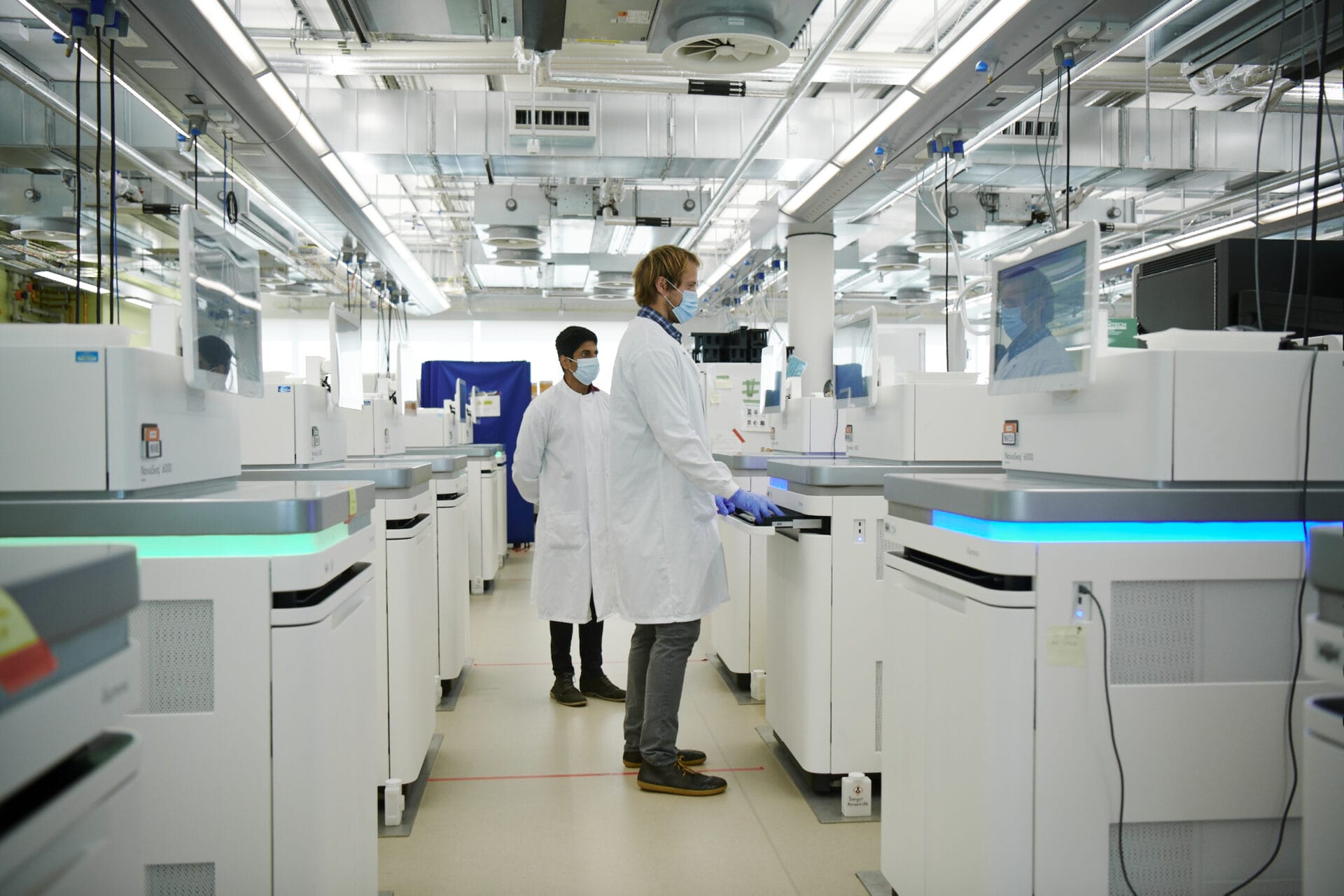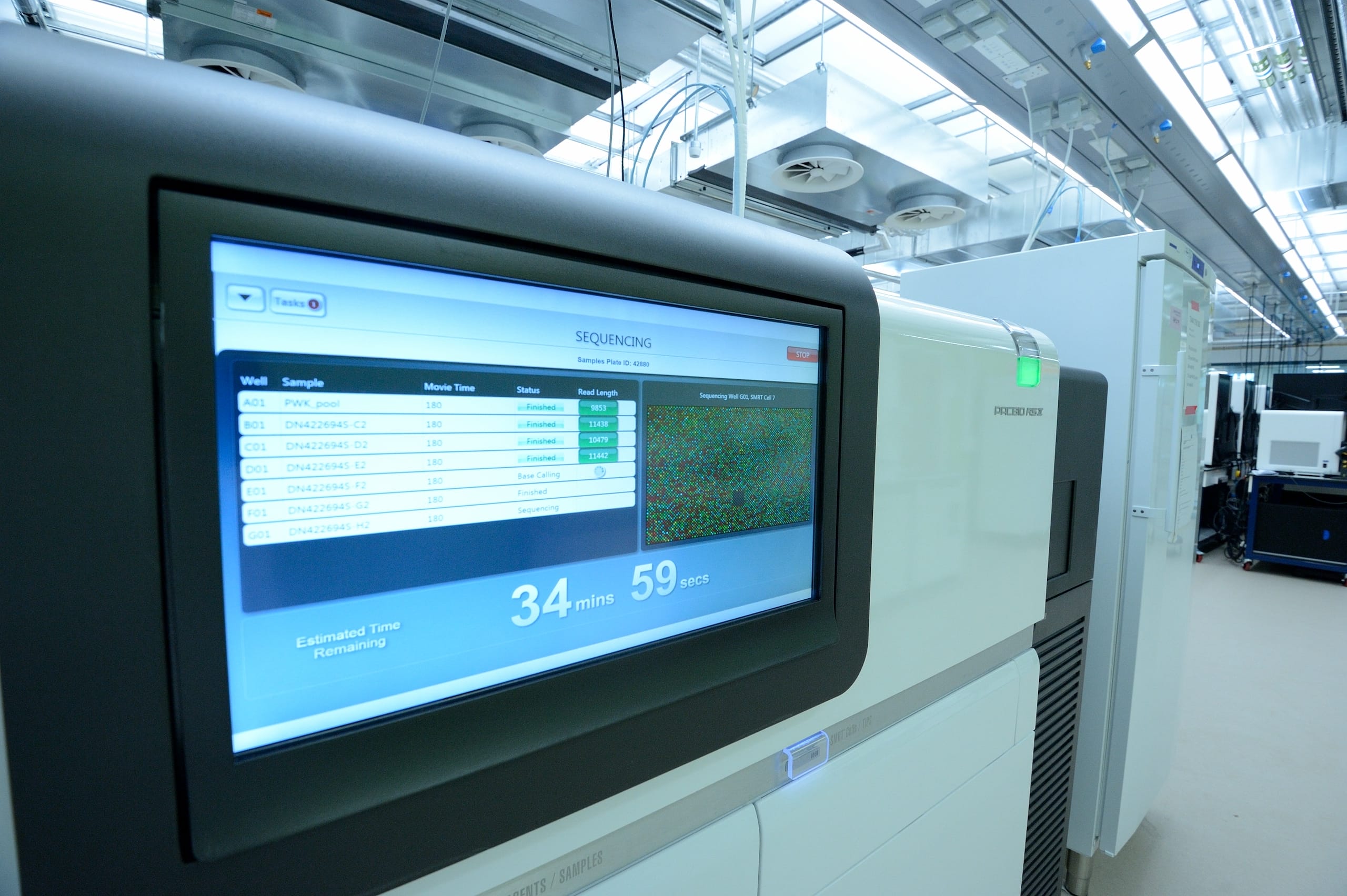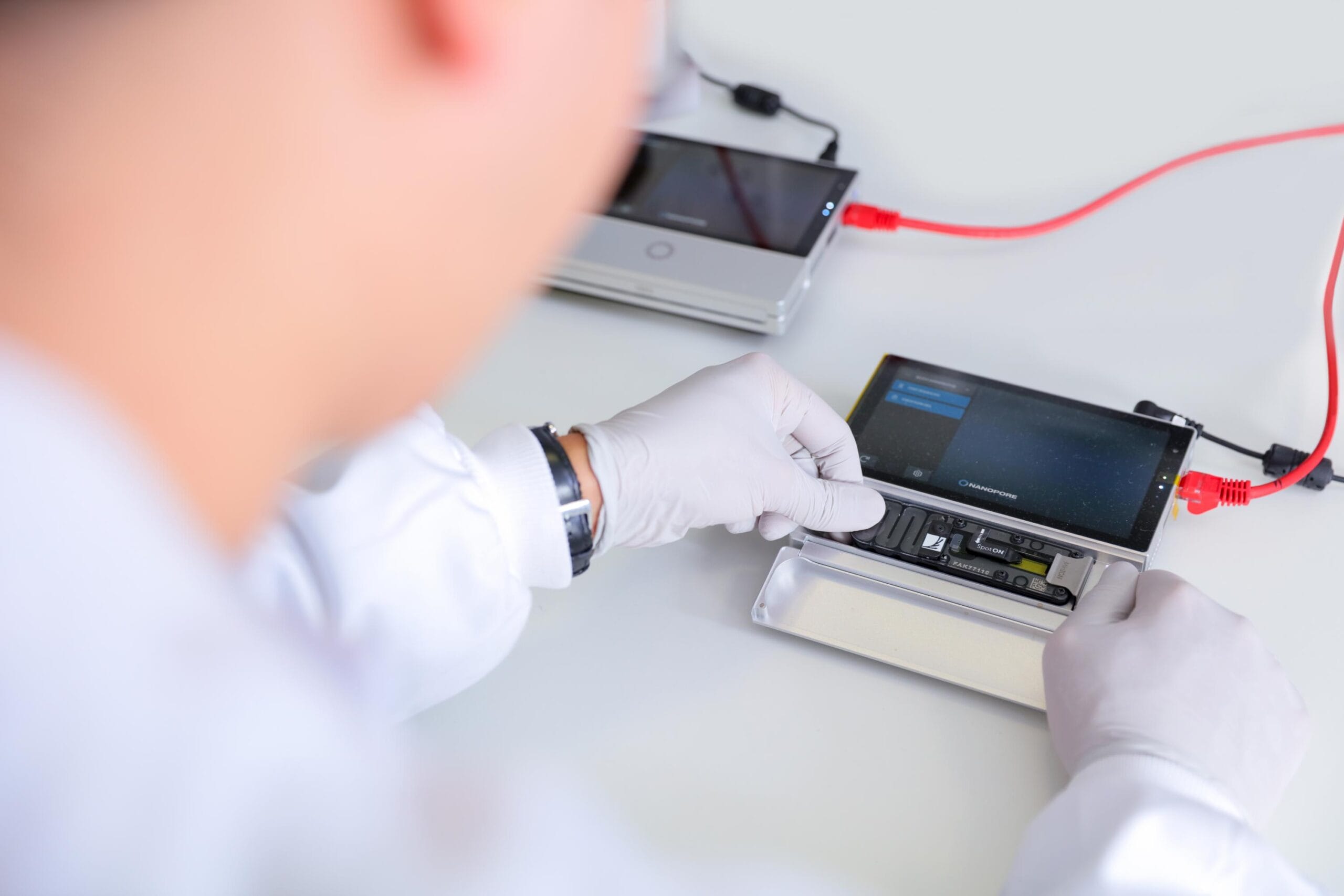What is third generation sequencing?
Image credit: Dan Ross / Wellcome Sanger Institute

A fundamentally different way to sequence DNA, third generation sequencing brought a cheaper, faster and more sophisticated approach to genomics.
- Third generation sequencing techniques were developed in the 2010s.
- They use different principles to Sanger sequencing, meaning they can decode much longer stretches of DNA.
- Techniques include PacBio’s Single-Molecule Sequencing in Real Time (SMRT) and Oxford Nanopore Technology (ONT) – and these are in use and continuing to evolve well into the 2020s.
Key terms
DNA
(deoxyribonucleic acid) A molecule that carries the genetic information necessary to build and maintain an organism.
Base
(or nucleotide) The basic unit of genetic instructions. DNA is encoded in four chemical bases: adenine (A), thymine (T), cytosine (C ) and guanine (G).
Genome
The complete set of genetic instructions required to build and maintain an organism.
Whole Genome Sequencing
(or full genome sequencing) The process of determining the entirety of an organism’s genome.
What is third generation sequencing?
- Since the Human Genome Project, the development of newer and better DNA sequencing technologies has cut the cost of sequencing genomes by 1000-times.
- Two common types of third generation sequencing are Single-Molecule Sequencing in Real Time (SMRT) and Oxford Nanopore Technology (ONT).
- Unlike previous techniques, which use similar principles to Sanger sequencing, third generation sequencing techniques use completely different approaches.
- For example, SMRT’s approach made it possible to analyse DNA in real-time. ONT is a very fast, compact technique that makes it possible to sequence DNA outside of traditional laboratory settings.
- In both cases, the raw data is converted by an algorithm into a sequence which can be read directly.

Image credit: Philip Mynott/Wellcome Sanger Institute
How did third generation sequencing advance science?
- Third generation sequencing provided scientists with a way to study genomes at unprecedented resolution.
- For example, for the first time, it was possible to sequence single molecules – revealing information about how individual cells function.
- The techniques were also able to sequence long (up to 30,000 bases) and ultra-long (up to several million bases) fragments of DNA. This makes it much easier and quicker to assemble full genomes.
- They can also overcome some of the challenges of early techniques which found it difficult to sequence specific regions of the genome – for example, if a fragment of DNA had a lot of C and G bases in it, or had a lot of As in a row.
- Initially, third generation techniques had a lower accuracy than existing techniques. However, because they are so quick and cost-effective, and their mistakes are random, repeating the process can lead to accuracies of 99.999%.

Image credit: Oxford Nanopore Technologies